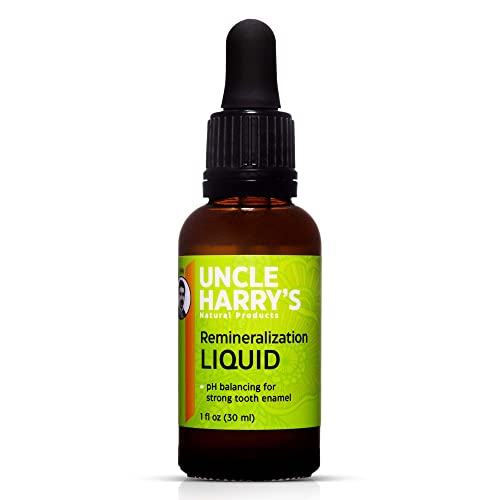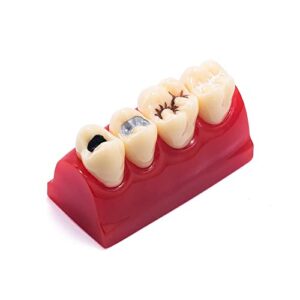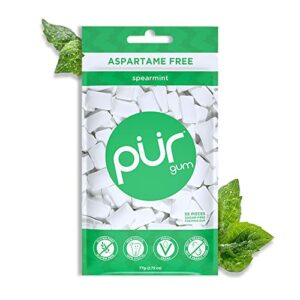In our step-by-step guide on how to remineralize enamel with fluoride varnish, we aim to provide you with a comprehensive understanding of this process and its importance. Enamel remineralization is crucial for maintaining healthy teeth, as it helps repair and strengthen the outer layer of our teeth, which can be weakened due to factors like tooth decay or acid erosion. By following our guide, you will learn how to apply fluoride varnish to your teeth effectively, allowing the fluoride to penetrate the enamel and promote remineralization. We hope that this guide will assist you in taking proactive steps towards better dental health and maintaining a strong, resilient smile.
Restore Your Tooth Enamel Naturally
Step 1: Prepare the tooth surface
To clean the tooth surface thoroughly, start by brushing your teeth using a soft-bristled toothbrush and fluoride toothpaste. Gently move the brush in circular motions, ensuring you reach all areas of your teeth, including the front, back, and chewing surfaces. Be sure to brush along the gumline as well, as plaque tends to accumulate there. Spend at least two minutes brushing your teeth, paying equal attention to each tooth.
After brushing, it is essential to floss your teeth to remove any plaque or debris that may be hiding between your teeth or along the gumline. Take about 18 inches of dental floss and hold it tightly between your thumbs and index fingers. Gently slide the floss between two teeth, curving it around the base of each tooth in a C-shape. Carefully move the floss up and down, making sure to clean both sides of each tooth. Repeat this process for all of your teeth, using a fresh section of floss for each interdental space.
By following these steps and thoroughly cleaning the tooth surface through brushing and flossing, you can effectively remove plaque and debris, promoting healthier teeth and gums. Remember to brush and floss at least twice a day, preferably after meals, to maintain optimal oral hygiene.
Step 2: Apply fluoride varnish
To open the fluoride varnish package and mix it well, start by carefully tearing open the package. Make sure to handle the package with clean hands to maintain hygiene. Once the package is open, you will notice a small container of fluoride varnish. Gently mix the varnish by using a stirring stick or by rolling the container between your palms. This step is important to ensure that the fluoride varnish is evenly mixed and ready to be applied.
Now it’s time to apply the fluoride varnish to the tooth surface. Take a disposable brush, preferably one that is provided in the package, and dip it into the fluoride varnish. Make sure to only use a thin layer of varnish, as using too much can lead to discomfort for the patient. With a gentle and smooth motion, apply the varnish to the surface of the tooth. Start with one tooth at a time, moving from tooth to tooth until you have covered all the desired areas. Remember to apply the varnish to the front, back, and chewing surfaces of the teeth for maximum effectiveness.
Example:
- Open the fluoride varnish package by tearing it carefully.
- Mix the varnish well by stirring it with a stick or rolling the container.
- Dip a disposable brush into the varnish.
- Apply a thin layer of varnish to the tooth surface.
- Use gentle and smooth motions to cover the front, back, and chewing surfaces of each tooth.
- Repeat the process for all the teeth that require fluoride varnish application.
By following these instructions, you will ensure that the fluoride varnish is applied correctly and effectively.
Step 3: Allow the varnish to set
Wait patiently for the fluoride varnish to set on the tooth surface. During this time, it is important not to touch or disturb the treated area. Find a comfortable position and avoid talking or eating to prevent accidental displacement of the varnish. We understand that waiting can sometimes be challenging, but allowing the varnish to set properly is crucial for its effectiveness.
While waiting, you can gently close your mouth but try to avoid biting or chewing on the treated tooth. It may also help to avoid drinking hot or cold beverages to minimize any discomfort or sensitivity. Take this time to relax and let the varnish work its magic. Remember, the varnish usually takes a few minutes to set, so we encourage you to be patient and allow it the time it needs to provide the best possible protection for your teeth.
Step 4: Advise the patient
Inform the patient that it is important not to eat or drink anything for at least 30 minutes after the application of fluoride varnish. This will help to ensure maximum effectiveness of the treatment. Explain to the patient that eating or drinking immediately after the varnish can wash away the fluoride and reduce its ability to strengthen the teeth and prevent cavities.
For example, you can say, “After we apply the fluoride varnish, it is important that you do not eat or drink anything for the next 30 minutes. This will allow the fluoride to fully penetrate and protect your teeth. Avoiding food or beverages during this time will ensure that the fluoride remains on your teeth and continues to provide maximum benefits.”
You can also emphasize the importance of this instruction by giving a relatable scenario. You might say, “Imagine you just got a fresh coat of paint on your nails. If you were to immediately dip your fingers in water or touch something dirty, the paint would easily come off and your nails wouldn’t stay protected. Similarly, eating or drinking right after the fluoride varnish application can wash away the protective layer and reduce its effectiveness in preventing tooth decay.
Step 5: Provide aftercare instructions
Step 5: Provide aftercare instructions.
Educating the patient on proper oral hygiene practices is crucial to ensure the success of their treatment and maintain the health of their teeth and gums. We recommend instructing the patient to brush their teeth at least twice a day, using a soft-bristled toothbrush and a fluoride toothpaste. Remind them to brush for two minutes, making sure to clean all surfaces of their teeth, including the front, back, and chewing surfaces. Additionally, encourage them to gently brush their tongue to remove bacteria and freshen their breath.
In addition to brushing, it is essential to advise the patient to floss their teeth daily. Demonstrate the proper technique, guiding them to slide the floss gently between each tooth, forming a C-shape around the tooth and moving it up and down to remove plaque and food particles. Emphasize the importance of reaching the gumline and reaching the back teeth.
Furthermore, stress the significance of regular dental visits for further treatment or monitoring. Encourage the patient to schedule routine check-ups every six months or as recommended by their dentist. Explain that these visits allow the dentist to assess their oral health, identify any potential issues early on, and provide necessary treatments or interventions. By attending regular dental visits, the patient can maintain the longevity of their dental work and prevent future complications.
Protecting and Strengthening Your Teeth
In conclusion, we have explored the valuable information on how to remineralize enamel with fluoride varnish. We have learned that fluoride varnish is a powerful tool in reversing early signs of tooth decay and strengthening enamel. By following the recommended steps and aftercare instructions, we can effectively protect and preserve our dental health. Remember, regular dental care, including brushing, flossing, and professional cleanings, is vital in maintaining strong and healthy teeth. Let us prioritize our oral hygiene and give our enamel the care it deserves.
Expert Advice
Step-by-Step Guide to Safely Reinforce and Restore Your Enamel
- First, brush your teeth thoroughly with a fluoride toothpaste to remove any food particles and plaque
- Once you have finished brushing, rinse your mouth with water to remove any excess toothpaste
- Take a small amount of remineralizing enamel on your finger or a clean toothbrush
- Apply the remineralizing enamel to the affected areas of your teeth. This may include areas with enamel erosion, sensitivity, or early signs of tooth decay
- Gently massage the remineralizing enamel into your teeth using circular motions for about 1-2 minutes
- Avoid rinsing your mouth or eating or drinking for at least 30 minutes to allow the remineralizing enamel to properly adhere to your teeth
- Repeat this process once or twice daily, preferably after brushing your teeth with fluoride toothpaste
- Remember to consult with your dentist or dental professional before using any dental products, including remineralizing enamel, especially if you have any underlying dental issues or concerns. They will be able to provide personalized guidance and advice based on your specific needs
Frequently Asked Questions about Remineralizing Enamel
Is remineralizing enamel a long-term solution or does it require ongoing maintenance?
Remineralizing enamel can be a beneficial long-term solution for maintaining healthy teeth, but it also requires ongoing maintenance. Enamel remineralization is the process of restoring minerals to the outer layer of the tooth, which helps to strengthen and protect it against decay.
However, it’s important to note that enamel remineralization is not a one-time fix. It requires consistent oral hygiene practices and regular dental care to maintain its effectiveness. This includes brushing your teeth at least twice a day with fluoride toothpaste, flossing daily, and using mouthwash if recommended by your dentist.
In addition to good oral hygiene, a balanced diet rich in calcium, phosphorus, and other essential minerals can support enamel remineralization. Avoiding excessive consumption of sugary and acidic foods and drinks can also help prevent demineralization and maintain the benefits of enamel remineralization.
Regular dental check-ups and professional cleanings are crucial in monitoring the health of your teeth and ensuring any potential issues are addressed promptly. Your dentist may also recommend additional treatments such as fluoride varnishes or dental sealants to further protect and enhance enamel remineralization.
So, while remineralizing enamel can provide a long-term solution for maintaining healthy teeth, it requires ongoing maintenance through proper oral hygiene, a healthy diet, and regular dental care.






















